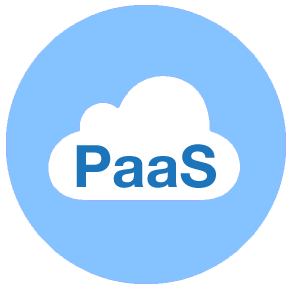
Platform as a Service (PaaS) – Introduction
Platform as a service (PaaS) : a cloud computing model which allows user to deliver applications over the Internet. In a this model, a cloud provider provides hardware ( like IaaS ) as well as software tools which are usually needed for development of required Application to its users. The hardware and software tools are provided as a Service. A PaaS provider hosts the hardware and software on its own infrastructure or a hired infrastructure such as AWS. As a result, PaaS relieves its users from installing in-house hardware and software needed to develop or run a new application. PaaS allows the developer to focus on the app by covering all infrastructure and middleware related management aspects.
A pass can be compared with Pizza as a Service , in example below :

Similarly Platform as a Service can be understood in following pic as :

In the pic above we see that PaaS provides us : OS , Runtime as well as middleware alongside benefits of IaaS. Thus PaaS frees users from maintaining these aspects of application and focus on development of the core app only.
Why choose PaaS :
- Increase deployment speed & agility
- Reduce length & complexity of app lifecycle
- Prevent loss in revenue
- Automate provisioning, management, and auto-scaling of applications and services on IaaS platform
- Support continuous delivery
- Reduce infrastructure operation costs
- Automation of admin tasks
The Key Benefits of PaaS for Developers.
- There’s no need to focus on provisioning, managing, or monitoring the compute, storage, network and software
- Developers can create working prototypes in a matter of minutes.
- Developers can create new versions or deploy new code more rapidly
- Developers can self-assemble services to create integrated applications.
- Developers can scale applications more elastically by starting more instances.
- Developers don’t have to worry about underlying operating system and middleware security patches.
- Developers can mitigate backup and recovery strategies, assuming the PaaS takes care of this.
Common PaaS opensource distributions include CloudFoundry and Redhat OpenShift.
Common PaaS vendors include Salesforce’s Force.com , IBM Bluemix , HP Helion , Pivotal Cloudfoundry.
PaaS platforms for software development and management include Appear IQ, Mendix, Amazon Web Services (AWS) Elastic Beanstalk, Google App Engine and Heroku.
There are three main categories of cloud computing services. The other two are infrastructure as a service (IaaS) and software as a service (SaaS).



